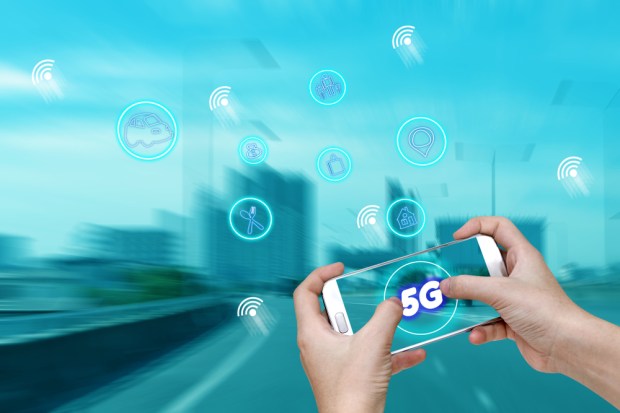What’s The Reward For Early 5G Deployment? Asia Will Soon Find Out

South Korea is taking an early lead in deployment of 5G, with three of the country’s telecoms recently deploying the service. That could give the country an edge when it comes to showcasing payment and commerce uses of the mobile network technology — and provide the rest of the world with an example of what might not work so well with 5G-enabled features.
The three telecoms — SK Telecom, LG Uplus and KT — launched 5G last month, though, according to one report, “they currently provide access with mobile 5G routers since 5G phones aren’t set to come out until March of 2019.” That doesn’t mean consumers have widespread access to 5G, though. The report, citing government figures, said that “5 percent of the country’s mobile users will be on a 5G network by 2020, 30 percent within the following year and 90 percent by 2026.”
It’s difficult to say what retail and payments use cases will emerge from these early 5G deployments in South Korea – but they are coming, and not just from that country. In fact, during the ongoing CES show in Las Vegas, Verizon said it would “offer $1 million in seed money to developers willing to work on new applications for the fifth-generation network,” according to one account.
A big part of the 5G pitch involves its retail capabilities. More specifically, 5G will result in more personalized shopping experiences and more precise marketing data and messaging, as pointed out by AT&T in an example that pretty much matches similar promotional efforts. “In order to collect data and deliver an experience that helps improve sales and create loyal customers, however, retailers need a network with speed, reliability and low latency,” the company said on one of its 5G websites.
The work toward 5G services that could directly impact payments and commerce has started. For instance, South Korea-based Samsung, which is expected to launch high-end 5G phones this year, announced in late 2018 its acquisition of Zhilabs, whose AI-based technology will help the tech company introduce new services in the 5G era, such as industrial Internet of Things (IoT) and connected cars.
China and Japan
China, too, is likely to play a major role in developing 5G use cases related to payments and commerce, given the country’s advances in mobile and other areas. China Unicom, the state-owned telecom, is reportedly on track to launch 5G pilots in 16 cities — Beijing, Hangzhou, Guiyang and others — and China Mobile “will reportedly deploy 10,000 5G base stations by 2020.”
In Japan, meanwhile, NTT Docomo, another major telecom, is betting on 5G deployments in 2020. Among the possibilities there? A high-speed 5G network that works with automotive vehicles, as per a 2018 test that involved Mitsubishi.
The U.S. View
In the U.S., Verizon launched a commercial 5G service in October with an offering called 5G Home, which is so far available in Houston, Los Angeles, Sacramento and Indianapolis.
At the CES show in Las Vegas this week, companies are demonstrating potential 5G use cases. “For instance, Verizon is partnering with Walt Disney’s StudioLab to explore how next-generation connectivity can improve Disney’s content production and transmission,” reads one account. “Meanwhile, Skyward President Mariah Scott said that Verizon is committed to being the first to connect one million drone flights on its 5G network.”
Right before Christmas, AT&T reportedly launched 5G service in these cities: Houston, Texas; Dallas, Texas; Atlanta, Texas; Waco, Texas; Charlotte, North Carolina; Raleigh, North Carolina; Oklahoma City, Oklahoma; Jacksonville, Florida; Louisville, Kentucky; New Orleans, Louisiana; Indianapolis, Indiana and San Antonio, Texas. “The initial rollout was available to particular businesses and consumers only, but everyone else will have access in 2019 when AT&T makes their NETGEAR Nighthawk 5G Mobile Hotspot available for purchase.”
Next up for AT&T’s 5G? Parts of these cities: Las Vegas, Nevada; Los Angeles, California; Nashville, Tennessee; Orlando, Florida; San Diego, California; San Francisco, California and San Jose, California.
Asia Advantage?
More generally, “we will likely see 5G deployed widely first in Asia sometime in 2019, though the U.S. shouldn’t be far behind,” said Kevin McMahon, director of emerging technology at SPR, in a recent interview. Rollouts in the U.S. have to pass muster with local zoning boards and other types of agencies. “In markets like China or South Korea, where the carriers and government do not face the same frictions [as] in the U.S., they have an advantage when it comes to rolling out their infrastructure.”
That advantage for Asia could help those markets make advances with the use of 5G in smart city and IoT concepts (though it is still too early for massive clarity on that question). “It is expected that the improvements offered by 5G will help accelerate the rollout of smart city features and initiatives,” McMahon said.
Getting to market first with a particular technology, or technology infrastructure, is certainly no guarantee of success. In fact, sometimes it pays to be the second or third person over the wall, so to speak, so as to learn from others’ mistakes. That could be part of the future story of 5G, though there is also good reason to think that countries with earlier deployments will help set the agenda for future uses of the technology.
